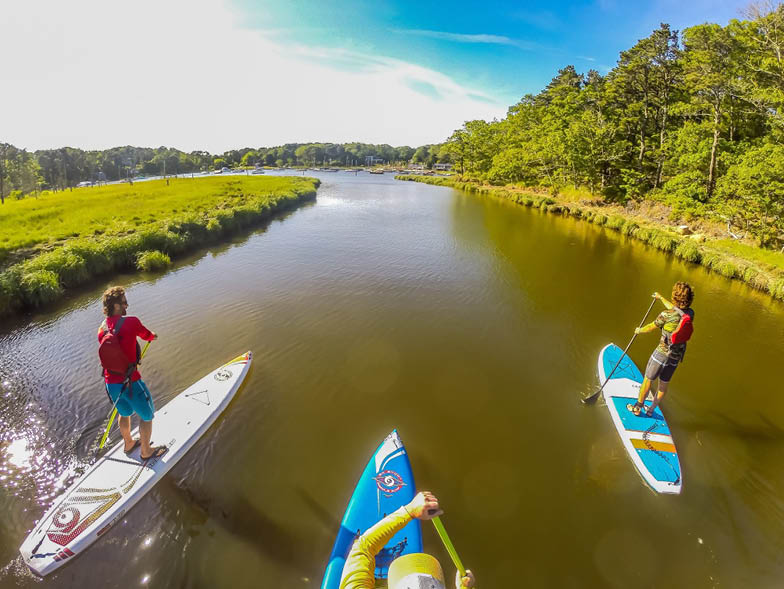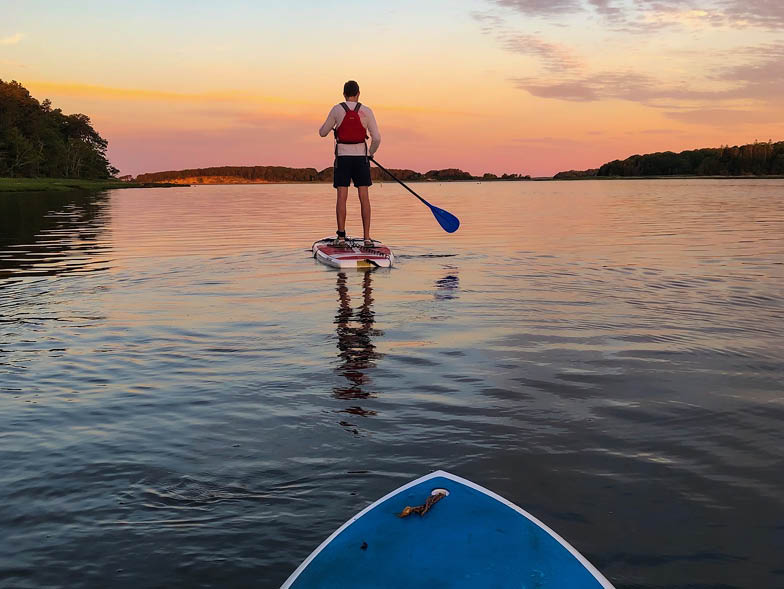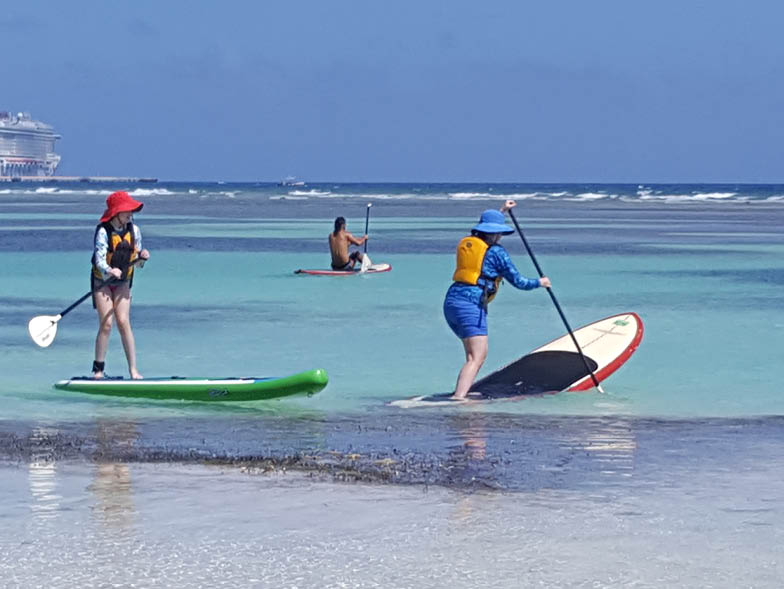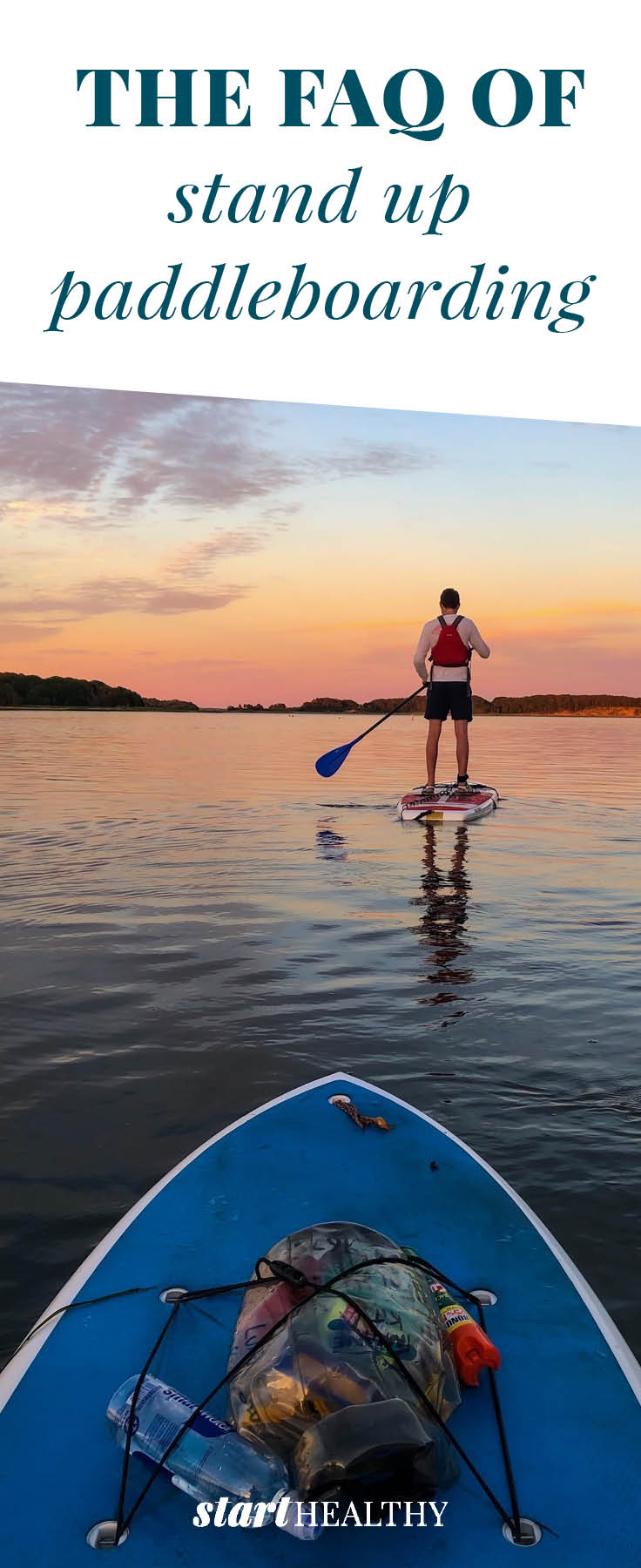Out on the Water
During the summer, there are many sports to participate in: rowing, tennis, swimming, cycling … the list goes on. One sport that has taken off in recent years is stand-up paddleboarding—a water activity that has roots in surfing but has developed into a sport all its own. Curt Devoir, director of the Professional Stand Up Paddle Association, delves into what encompasses this popular warm-weather activity.
How would you describe stand-up paddleboarding (SUPing)?
Many people refer to stand-up paddleboarding as “walking on water,” but it goes way beyond that. You start by placing your board in the water, kneeling, and paddling on each side. To SUP, you then stand up slowly, shoulder-width apart, with a slight bend in the knees. It’s something that can be done individually, which makes for a peaceful and tranquil experience. Or you could paddleboard with family and friends and explore places that you would otherwise not be able to get to. It can be a good workout, and you can even compete against others in races. There are SUP yoga and other fitness-centric classes that have continued to gain popularity as well.
When and where did this sport get started? What do you see for the future of SUPing?
In the mid-twentieth century, surf instructors on the island of Oahu, Hawaii, started using paddles to better allow them to see and instruct their students. The use of the paddles enabled them to slow down and maneuver better, and it also improved their ability to see wave sets coming in. As the sport increases in popularity, more specialties are being explored. SUP surf, SUP downwind, river SUPing, and SUP yoga have been popular for years. The introduction of competitive SUP racing into venues like the Olympics will greatly increase the sport’s exposure, which I hope to see.

What are some basic tips for beginners?
Try to relax, and keep your eyes up. A wider stance, similar to how you would stand in surfing, helps with stability. Use your paddle to help balance yourself and continue moving. A stationary floating board is more susceptible to being rocked from all angles, whereas a board that is moving will glide over the water. Continually keeping your paddle in the water adds a great amount of stability, while holding it up and trying to balance yourself with the paddle as a tightrope staff does no good.
What skills are needed to stand-up paddleboard?
You should have a good sense of balance and not have a fear of falling into the water! Once people relax and move with the water and the board, their performance and enjoyment both increase.
Can you SUP on any body of water?
Yes, but you shouldn’t without the proper training and equipment. Paddling in a river with rapids, shallow spots, and rocks is very different than paddling around the lake in your city park. Likewise, ocean waves and currents generate conditions that present challenges that you would not encounter paddling through your local marina. Beginners should start on a body of water with few waves, which would minimize the current and wind strength. Make sure to check with specific state guidelines. Some states even require registering your board as a vessel. There are also specific rules when it comes to wearing life jackets and having other safety gear on you.
How does someone go about choosing the right paddleboard for them?
This is not a one-size-fits-all sport. Height and weight play a big part in choosing your board. However, prior to any of that, you need to decide on what you want to do. Race boards, touring boards, and yoga boards are all very different in length and volume. Many people find starting with an allround board—which is a wider and longer board—works best for them as they figure out how they will be spending most of their paddling time.

What are some common mistakes that people make when SUPing?
The number one mistake we see is people holding the paddle backward—it should be held so the blade is sloping away from you, angled forward. It will look to most people as if it should be facing the other direction, but this is the correct way. If you hold the paddle backward, it will make paddling far less efficient and possibly cause strain on your back and other muscles. It also buries the nose of the board, making the board less stable.
Describe the physical benefits of SUPing:
Stand-up paddleboarding is a full-body workout: it works the legs, arms, and core muscles. When racing, SUPing can be an even better workout—with the potential to burn over a thousand calories (per one hour of racing). Racers will need to be good at sprints and have great turning ability in order to perform well. One of the first and most prestigious SUP races is the thirty-two-mile M2O (Molokai 2 Oahu) race, which is performed in the open ocean. It tests the competitors’ ability to handle waves and currents.

Photo courtesy of: Curt Devoir
What are some crossover skills between SUPing and other water sports?
Getting an understanding of how it feels to be on the water and learning the motor skills used when holding a paddle are both great things to bring from other water activities that will speed up your SUP learning curve. While many people go out and rent or buy a board and teach themselves to paddle, a quick introduction class is inexpensive, and it will prevent some bad habits from forming. Taking classes also makes it more fun!
What advice would you give someone who wants to try stand-up paddleboarding?
The one piece of advice I would give to a new paddler is to not make the same mistake that I did and try to teach yourself. For the first year, I did OK—I was able to figure out how to stand up and paddle around; however, I was not very proficient or comfortable. After getting some real tips, my confidence grew—as well as my proficiency.
For more information and to find a certified instructor in your area, visit psupa.com









